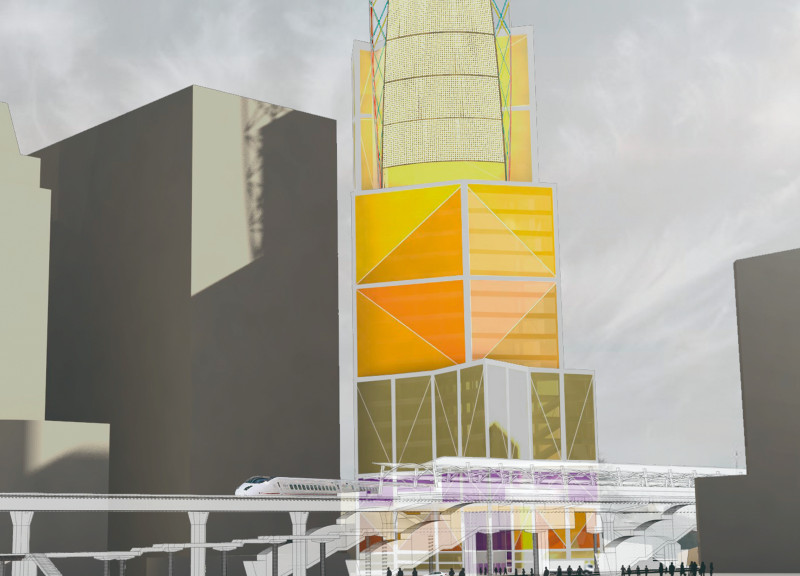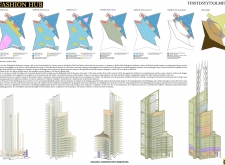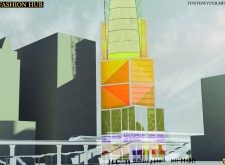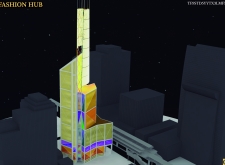5 key facts about this project
### Project Overview
The Fashion Hub is a contemporary architectural project located in the Commercial City Center of Bangkok, near the Phloen Chit Wai District. Designed as a creative center for the fashion industry, the structure aims to integrate technology with artistic expression, promoting collaboration while aligning with both local cultural dynamics and global fashion trends.
### Spatial Configuration and User Interaction
The architectural design is centered around the concept of a "Container," featuring a collage of angular geometries that reflect both modern aesthetics and traditional craftsmanship. The asymmetrical layouts of the upper levels enhance visual interest and user engagement, while scaling techniques are employed to create a hierarchy that facilitates navigation. A central atrium serves as the heart of the building, designed to foster social interaction and accommodate events such as fashion shows and exhibitions. Vertical circulation points throughout the hub enhance accessibility, connecting various functional areas effectively.
### Material Choices and Sustainability Features
The material palette is selected for its durability and thematic cohesion. Reinforced concrete forms the structural backbone, while expansive glass panels in the facade promote natural light and visual connectivity to the surrounding environment. A metal framework enhances the structure's stability and aligns with the modern aesthetic, while colored translucent materials create a vibrant atmosphere that reflects light. Sustainability is a key consideration, evident in passive solar heating, natural ventilation solutions, and rainwater harvesting systems, all contributing to the project’s environmentally conscious approach.






















































